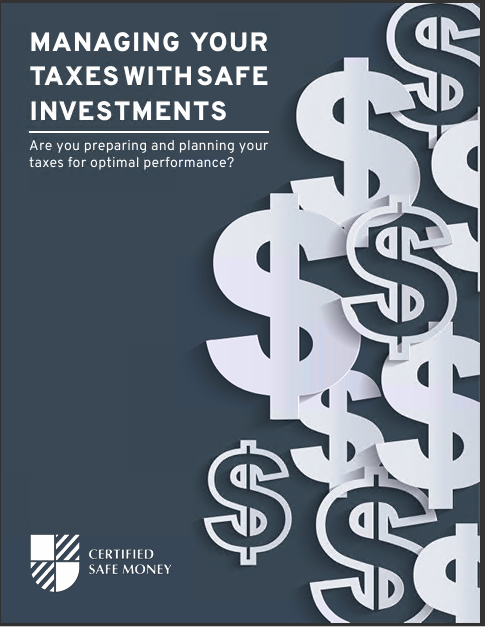Key Takeaways:
- Choosing the right life insurance policy involves assessing individual needs, financial goals, and personal preferences.
- Understanding the different types of life insurance and how they align with your situation is crucial for making an informed decision.
How to Select the Right Life Insurance for Your Situation
Life insurance is a vital component of financial planning, providing a safety net for your loved ones in the event of your untimely death. However, with various types of life insurance policies available, selecting the right one can be daunting. This guide will help you assess your needs and preferences to choose the most suitable life insurance policy for your situation.
Understanding Life Insurance Types
Before diving into the selection process, it’s essential to understand the basic types of life insurance:
1. Term Life Insurance
Term life insurance provides coverage for a specific period, such as 10, 20, or 30 years. If the policyholder dies within the term, the beneficiaries receive the death benefit. If the term expires while the policyholder is still alive, the coverage ends unless renewed.
Pros:
- Generally more affordable than permanent policies.
- Simple and straightforward.
Cons:
- No cash value component.
- Coverage ends when the term expires.
2. Whole Life Insurance
Whole life insurance, a type of permanent life insurance, provides lifelong coverage as long as premiums are paid. It includes a cash value component that grows over time and can be borrowed against or withdrawn.
Pros:
- Lifetime coverage.
- Cash value accumulation.
Cons:
- Higher premiums compared to term life insurance.
- More complex than term policies.
3. Universal Life Insurance
Universal life insurance is another form of permanent life insurance with flexible premiums and adjustable death benefits. The policy’s cash value earns interest based on market rates or a minimum interest rate, whichever is higher.
Pros:
- Flexible premiums and death benefits.
- Potential for cash value growth.
Cons:
- Premiums can increase if cash value is insufficient.
- More complex than term or whole life insurance.
4. Variable Life Insurance
Variable life insurance is a permanent policy with investment options. The cash value can be invested in various sub-accounts, similar to mutual funds, and the death benefit and cash value fluctuate based on investment performance.
Pros:
- Investment growth potential.
- Lifetime coverage.
Cons:
- Higher risk due to investment component.
- Requires active management and monitoring.
Assessing Your Needs
To select the right life insurance policy, it’s crucial to evaluate your specific needs and circumstances. Here are key factors to consider:
Financial Dependents
Consider who depends on your income and how long they will need financial support. If you have young children, a longer-term policy may be necessary. If you’re supporting an aging parent or spouse, permanent coverage might be more appropriate.
Example: A 30-year-old with two young children may opt for a 20-year term life insurance policy to cover the years until the children are financially independent.
Financial Goals
Identify your financial goals and how life insurance fits into your overall financial plan. Are you looking to cover debts, fund education, or provide a legacy?
Example: Someone with significant debt and a mortgage may choose term life insurance to ensure these obligations are met in case of their death.
Budget
Your budget will significantly influence your choice of life insurance. Term life insurance typically offers the most coverage for the lowest cost, while permanent policies are more expensive but offer additional benefits.
Example: A young professional on a tight budget may start with term life insurance and later convert to a whole or universal life policy as their financial situation improves.
Health and Age
Your health and age affect both the availability and cost of life insurance. Younger, healthier individuals typically get lower premiums.
Example: A healthy 25-year-old will pay less for the same amount of coverage compared to a 50-year-old with health issues.
Matching Needs to Policy Types
Short-Term Needs
If you need coverage for a specific period, such as until your children graduate college or your mortgage is paid off, term life insurance is an excellent choice. It provides substantial coverage at a lower cost.
Example: A 40-year-old with a 15-year mortgage might choose a 15-year term life policy to ensure the mortgage is paid off if they pass away.
Long-Term Needs
For lifelong financial protection, estate planning, or if you have lifelong dependents, whole or universal life insurance may be more suitable. These policies provide lifelong coverage and build cash value.
Example: Someone with a special needs child who will require lifelong care might opt for a whole life policy to ensure continuous financial support.
Investment and Flexibility
If you want the potential for investment growth and flexible premiums, consider universal or variable life insurance. These policies offer more control over cash value growth and death benefits.
Example: An individual looking to combine life insurance with investment opportunities might choose variable life insurance for the potential higher returns.
Practical Steps to Choose the Right Policy
Evaluate Your Coverage Needs
Calculate the amount of coverage you need based on your financial obligations, future income replacement needs, and any other specific goals. Use online calculators or consult with a financial advisor to get an accurate estimate.
Compare Policies
Shop around and compare different policies from various insurers. Look at the coverage options, premiums, and benefits each policy offers. Ensure you understand the terms and conditions, including any exclusions or limitations.
Consider Riders
Riders are add-ons that can customize your policy to better meet your needs. Common riders include:
- Accidental Death Benefit Rider: Provides an additional benefit if the insured dies in an accident.
- Waiver of Premium Rider: Waives premium payments if the insured becomes disabled.
- Child Term Rider: Provides coverage for the insured’s children.
Review the Insurer’s Reputation
Choose a reputable insurance company with strong financial stability and good customer service. Check ratings from agencies like A.M. Best, Moody’s, and Standard & Poor’s.
Consult a Financial Advisor
A financial advisor can help you navigate the complexities of life insurance and ensure you choose a policy that aligns with your financial goals and needs. They can provide personalized recommendations and help you understand the implications of different policy features.
Making the Decision
After assessing your needs, comparing policies, and considering all the relevant factors, you’ll be better equipped to choose the right life insurance policy. Remember, the best policy is one that fits your unique situation, provides the necessary coverage, and aligns with your financial goals.
Example Scenario:
John’s Situation:
- Age: 35
- Married with two young children
- Has a mortgage and other debts
- Wants to ensure his family’s financial security if he passes away
John’s Considerations:
- Needs coverage to support his family until his children are financially independent.
- Wants to cover outstanding debts, including the mortgage.
- Has a moderate budget for insurance premiums.
John’s Decision: John decides to purchase a 20-year term life insurance policy with a death benefit that covers his mortgage, debts, and provides additional funds for his family’s living expenses and his children’s education. He adds a waiver of premium rider to ensure the policy remains in force if he becomes disabled and unable to work.
By following a similar process, you can make an informed decision that provides the best protection for your loved ones and aligns with your financial goals.
Tailoring Life Insurance to Your Needs
Choosing the right life insurance policy requires a careful assessment of your individual needs, financial goals, and personal preferences. By understanding the different types of life insurance and evaluating your specific situation, you can select a policy that provides the necessary coverage and financial security for your loved ones.
Take the time to compare policies, consider riders, and consult with a financial advisor to make an informed decision. With the right life insurance policy in place, you can have peace of mind knowing that your family is protected no matter what the future holds.
Contact Information:
Email: devin@ambrosewealth.com
Phone: 5099875559














